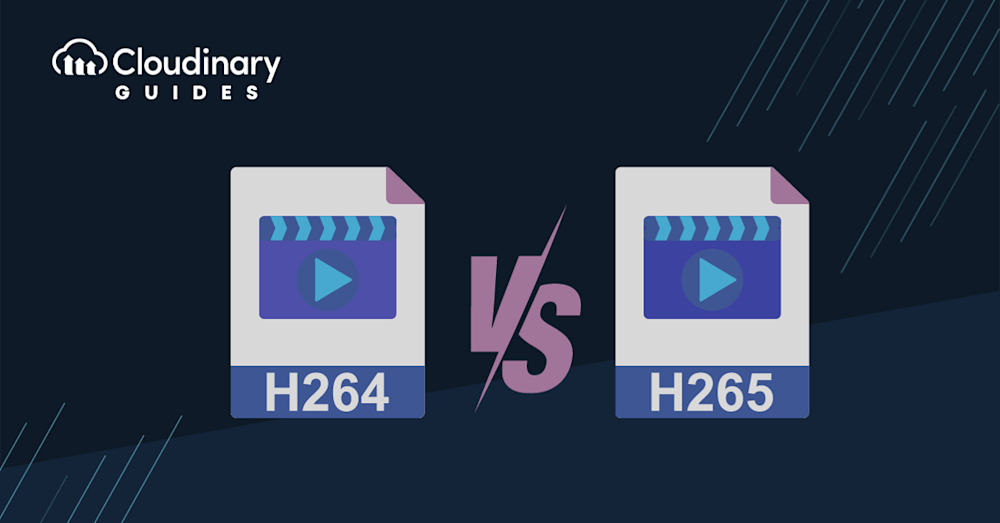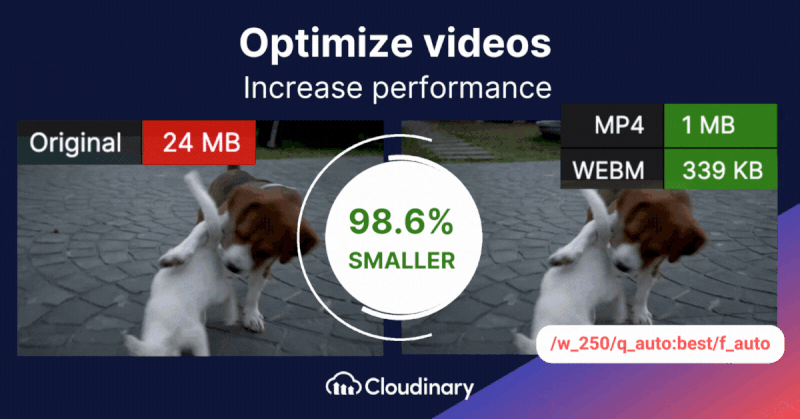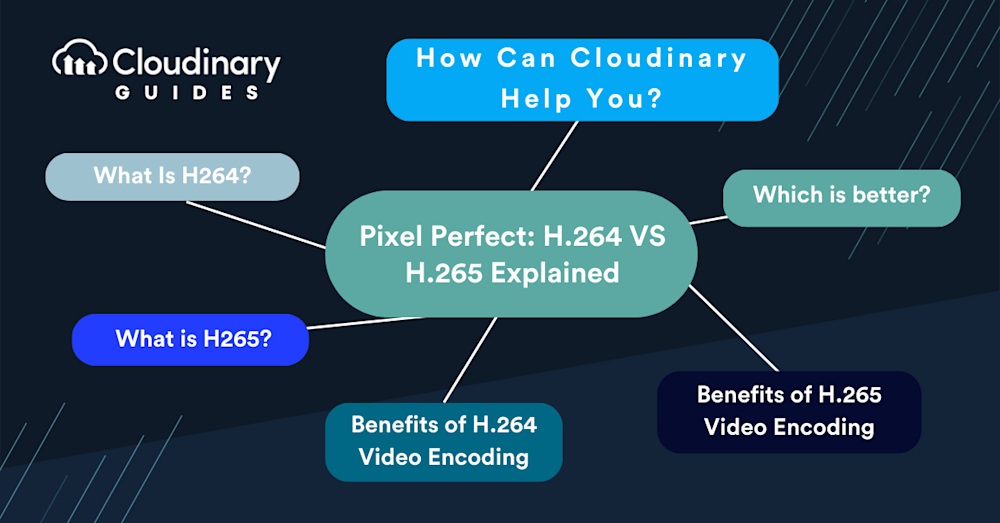
When picking a video encoder, two names pop up a lot: H.264 vs H.265 (also called HEVC). Think of them like the behind-the-scenes magic that helps your videos play nicely, whether you’re watching a show on a streaming service or chatting on a video call. The newer one, H.265, has some cool features, but does that mean the older H.264 is out of the game? If you’ve ever been curious about H.264 vs H.265 or why they even matter, you’re in the right place.

What Is H264?
H.264, also known as AVC (Advanced Video Coding), is a widely adopted video compression standard. It was crafted to achieve high-quality video in relatively low bitrates. By compressing your video files efficiently, H.264 has become the go-to standard for most online video platforms and applications.
Imagine you’ve shot a fantastic 5-minute video clip. This raw footage can easily consume gigabytes of storage without any compression. That’s where H.264 steps in, compressing your video to a fraction of its original size without significantly compromising on quality.
What is H265?
H.265, or HEVC (High-Efficiency Video Coding). It’s the successor to H.264 and has more advanced features. HEVC was crafted with the next generation of video in mind – think 4K, 8K, and beyond. It promises to deliver better compression, resulting in smaller file sizes, all while retaining, or even improving, the video quality of its predecessor.
When it comes to H.264 vs H.265 for compressing videos, HEVC is designed for better efficiency. With HEVC, a video can be compressed even further, sometimes down to half the size of what H.264 would produce, without a noticeable drop in quality. Impressive, right?
Benefits of H.264 Video Encoding
H.264 isn’t just popular by coincidence. There are concrete reasons behind its wide acceptance:
- Versatility. H.264 is versatile. It’s used in everything from mobile videos and streaming services to satellite broadcasts.
- Efficiency. While HEVC might be the new kid on the block, don’t underestimate H.264. It still offers decent compression ratios. This means smaller file sizes without sacrificing too much on the quality front.
- Compatibility. One major strength of H.264 is its broad compatibility. It’s supported by most devices, browsers, and platforms out there. So, if you’re considering ensuring your video reaches a broader audience without hitches, H.264 has your back.
Now, here’s something crucial. While H.264 provides enough quality for most everyday uses and is still considered an industry standard, it’s essential to gauge whether it aligns with your specific needs especially when HEVC offers some tangible advantages.
Benefits of H.265 Video Encoding
Stacking up H.264 vs H.265, you’ll quickly realize it’s not just a mere upgrade; it’s a game-changer. Let’s analyze some of its key benefits:
- Superior Compression. HEVC is a video compression standard that’s more efficient than H.264. The numbers speak for themselves. HEVC is 25-50% more efficient than H.264. This implies that HEVC files are roughly half the size of H.264 files. To put this into perspective, a 44-second 1080P video would demand about 22.1MB using HEVC, in contrast to the 58.8MB it would occupy with H.264.
- Advanced Video Quality. Better compression doesn’t mean compromising on quality. With H. 265, you can achieve higher compression rates without visible deterioration of video quality. This is especially critical for industries where the minutest details matter, like medical imaging or professional-grade video editing.
- Future-ready. HEVC is optimized for the future. As 4K, 8K, and even virtual reality (VR) content rises, efficient compression without quality loss becomes paramount. H. 265 is designed precisely for these new challenges.
However, it’s not all sunshine and roses. HEVC does have its challenges. For instance, HEVC requires more processing power to encode and decode video. This could mean it’s not the best pick for older or less powerful devices. On the other hand, H.264, due to its lesser computational demands, proves to be more efficient on such devices.

H.264 vs H.265: Which is Better?
The answer isn’t black and white. It largely depends on what you aim to achieve. For sheer compatibility and widespread acceptance, H.264 remains unbeaten. If your primary concern is to reach as many devices and platforms as possible, particularly older ones, then H.264 is your trusty ally. It requires less processing power, making it a more feasible option for devices that aren’t exactly cutting-edge.
However, if you’re looking towards the horizon, considering things like 4K video streaming or other high-resolution applications, H.265 is undeniably superior. It’s tailored for the next wave of video tech, ensuring you get the smallest file sizes without compromising the visual experience.
But there’s a catch. Licensing and patent issues around H.265 mean that not every device or platform supports it, at least not yet. These logistical challenges can impact your decision, especially if you’re a content creator or a service provider aiming for maximum reach.
How Can Cloudinary Help?
Choosing between all the video codecs available can be time-consuming. You want the best for your users, but you also need to maintain efficiency and be compatible to most devices. Here’s where Cloudinary can make a difference.
Cloudinary’s dynamic platform supports both H.264 and H.265 formats, removing the dilemma of choosing between the two. Utilizing its advanced automation techniques, Cloudinary takes care of format selection, adjusting it based on the user’s device and browser capabilities. This ensures the delivery of high-quality video content for each specific viewer.
Plus, you no longer have to spend time on the manual conversion of file formats. Upload your video, and Cloudinary handles the necessary conversions without losing any quality.
But that’s not all. Cloudinary shines in ensuring optimal video quality without sacrificing loading speed. Its unmissable feature is its intelligent quality optimization, which adjusts the video quality based on the available bandwidth. This ensures an excellent user experience across the board, irrespective of internet speed.

Final Thoughts
Your choice between H.264 and H.265 should be dictated by your unique needs and the audience you aim to serve. Both have their strengths and weaknesses. By weighing these factors against your goals, you’ll be better equipped to make an informed decision.
The differences of H.264 vs H.265 might seem complex, but the choice becomes clearer once you understand their strengths and potential applications. As with any technology decision, it’s about leveraging the right tool for the job.



